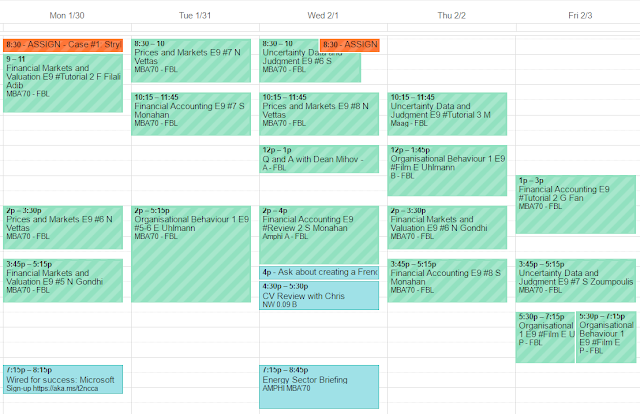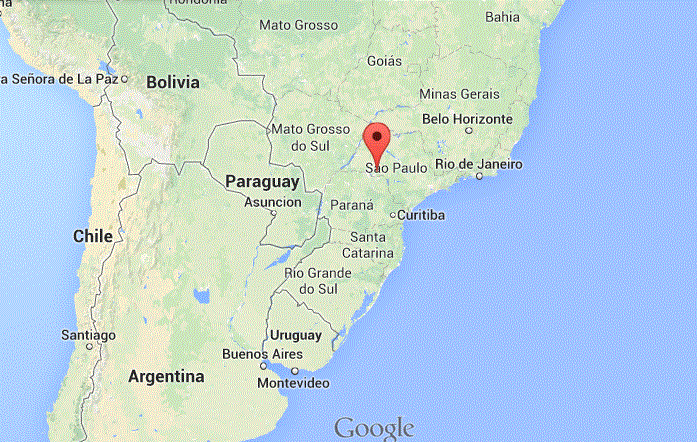Jamón Ibérico
Guijuelo and Salamanca, Spain are known across the country and Europe for one thing: jamón ibérico, or iberian ham. Iberian is a race of pig that is much darker in color. Sandra's dad Luis owns a farm with about 3,000 iberian pigs so I thought I'd take a trip to see it. Within jamón ibérico there is further differentiation based on what the pigs eat. The best jamón ibérico is called "de bellota," which means that the pig was fed entirely of acorns. Less prestigious there are pigs that eat a mixture of bellotas and cereals, and then lastly there are just pigs that eat cereals.
The farm was about 20 minutes from Salamanca, and it was extremely rural, but quite beautiful.
The farm was divided into lots of pigs. The pigs are divided by age in order to keep track. There were about 400 females and 30 males. Apparently that is the correct ratio for pigs. Then each of the age groups are split into cohorts. When the pigs have about 4 months, they leave from inside and go outside. Before they leave to go outside their skin is pink like normal pigs. Once they go outside, the skin quickly darkens. Each of the cohorts were of increasing sizes until the largest at 14 months. The pigs are killed at 14 months in order to be processed. If pigs live longer than 14 months, their meat begins to toughen and it is not as soft.
I thought this picture below would be great for the movie "The Rise of the Pig."
The pigs eat in these stalls. They use their noses to push two levers. The one on the left for cereals and the one on the right for water. When they were hungry they would all crowd around the food stalls and squeal as there were more pigs than stalls and they all wanted to eat.
These pigs are younger than 4 months and still haven't seen the light of day. Notice that for this reason their skin is still pink. The wood thing in the middle is a heater for the cold months in winter.
The 400 female pigs have about 2.5 litters per year of between 8-10 piglets. Each female is good for about 8-9 litters. When the breeding males and females are retired, typically their meat is too tough for jamón ibérico, so their meat is sold to be in hamburgers, hot dogs, and the like. Yum. The females have to be placed in these cages otherwise they will accidentally crush a few of their young. Not very good moms if they accidentally crush some of their babies. These piglets are very young, only a week or so.
These two little guys are hanging out on the heater.
This is the corridor of the building that stores all the females with their babies, and the pigs under 4 months. The property was huge. There's 3,000 pigs remember. Because the females have 8 young, the population can fluctuate wildly. Luis projected that they would have 6,000 pigs by winter.
Of course, there is always some disease. Although they had a piggy hospital, not all pigs survive.
These silos house the cereals used to feed the pigs. Pigs eat about 3% of their body weight per day. So if you have a 300 lb pig, you need 9 pounds of grain. When I say cereals, I'm not referring to Fruit Loops and Cheerios.
After the pigs have been slaughtered, the meat must be cured with salt for 2 years. Given the 14 months to raise the pigs, and 2 years to cure the meat, jamón ibérico is a bit like wine in terms of investment payoff as you don't see any money back for about 3.5 years. Luis also owns a store that sells his jamón ibérico, and he has 3 restaurants featuring jamón from his farm. Talk about vertical intergration. When you control the production in this way, you keep all money in the value chain as there are no middle men.
To give you an idea of the cost of jamón ibérico, it's about 30 euros per kilo, which would be about $18/lb. A much higher price than your average deli ham. Having eaten jamón ibérico for the last 3 weeks, I can tell you that it has way more flavor than deli ham. The ham is red in color with thin strips of white fat. It is tougher than regular ham, but not as tough as jerkey. The jamón is cut directly off the leg as seen below.
List of prices and cuts. Notice the plate of jamón ibérico on the table.
Overall, I am going to greatly miss jamón ibérico when I leave Spain. I would like to start importing it, but US regulations relating to meats are quite strict. One day... I also think jamón ibérico vodka would be great for Bloody Mary's.



























Comments